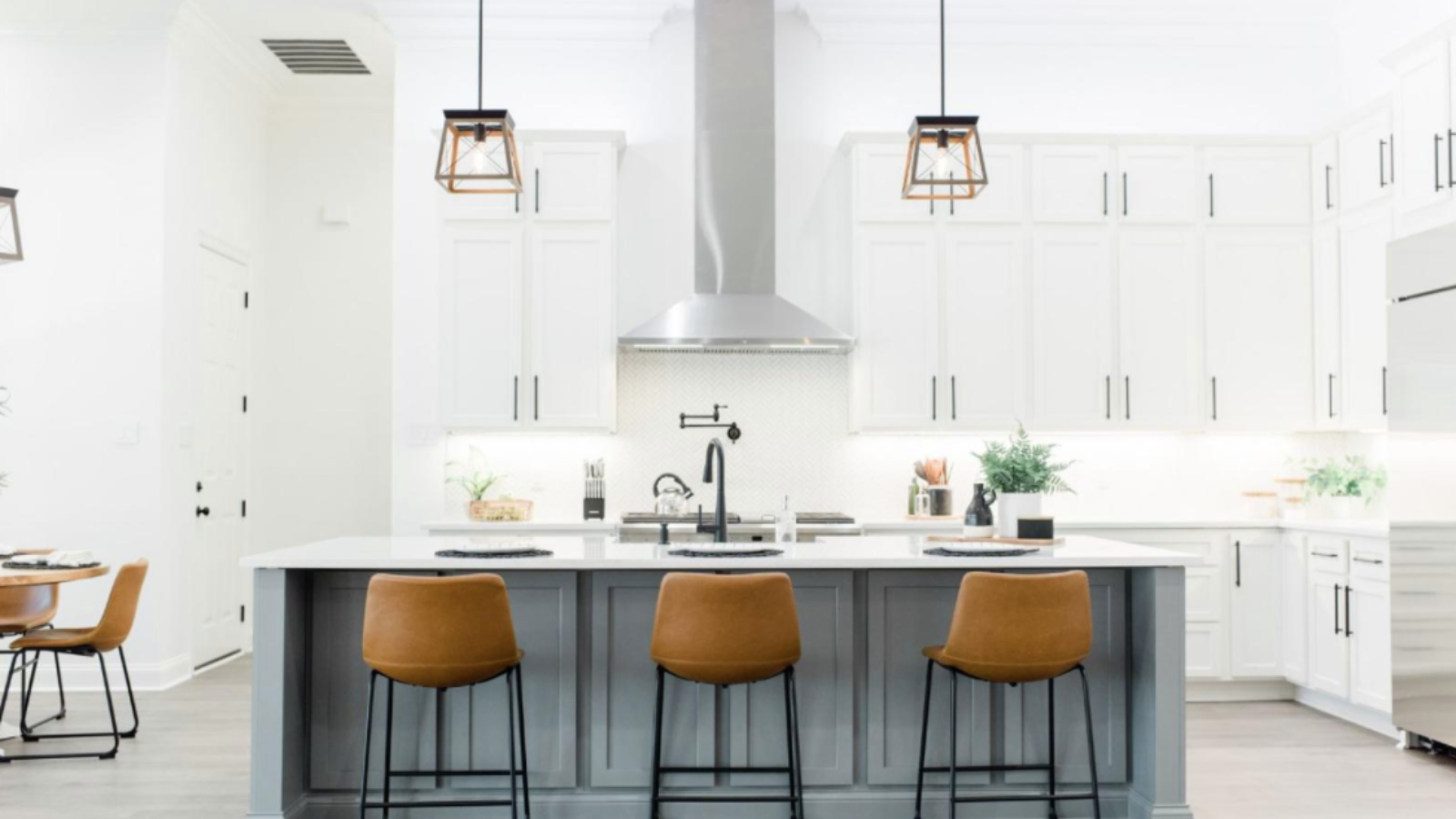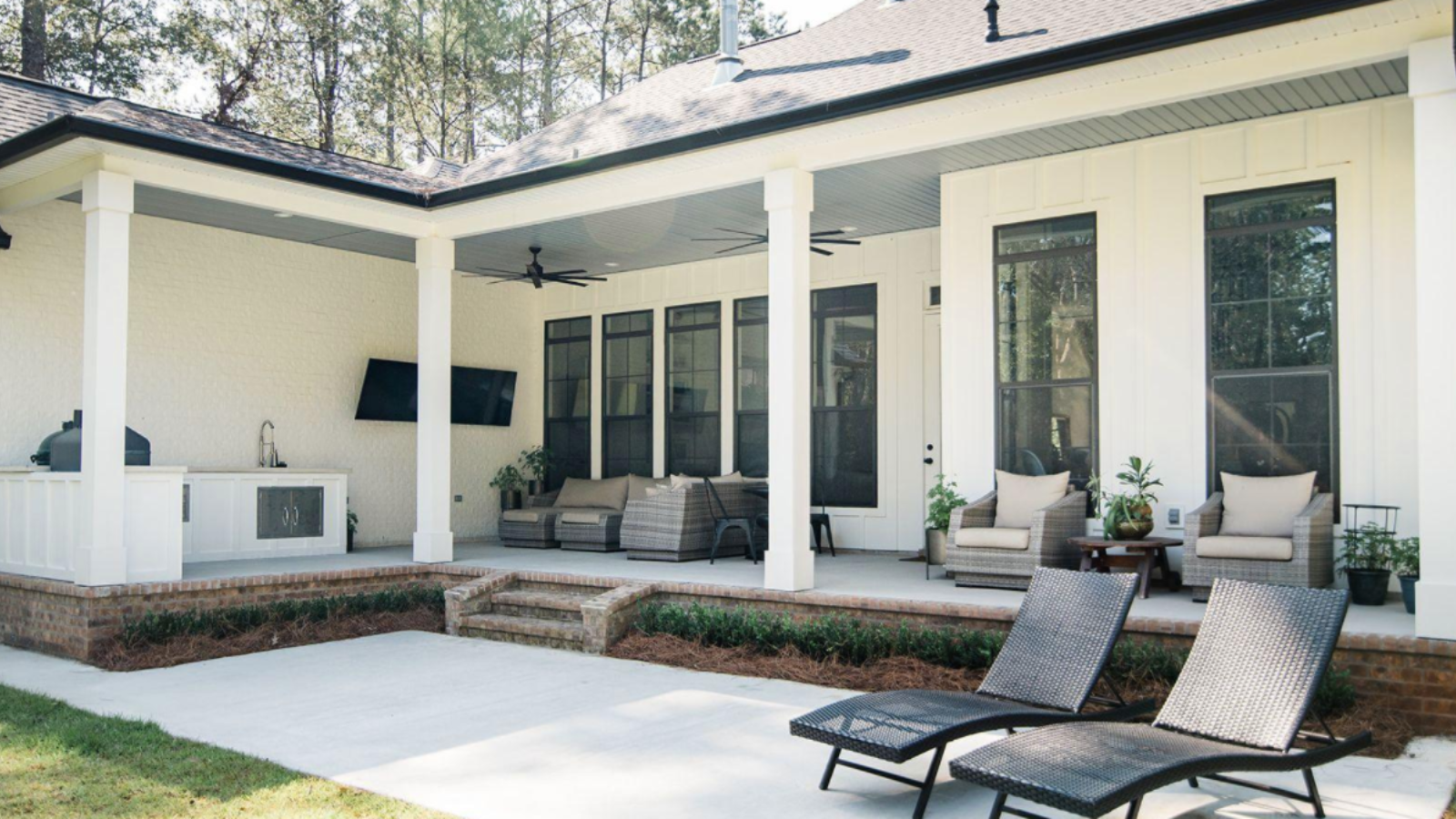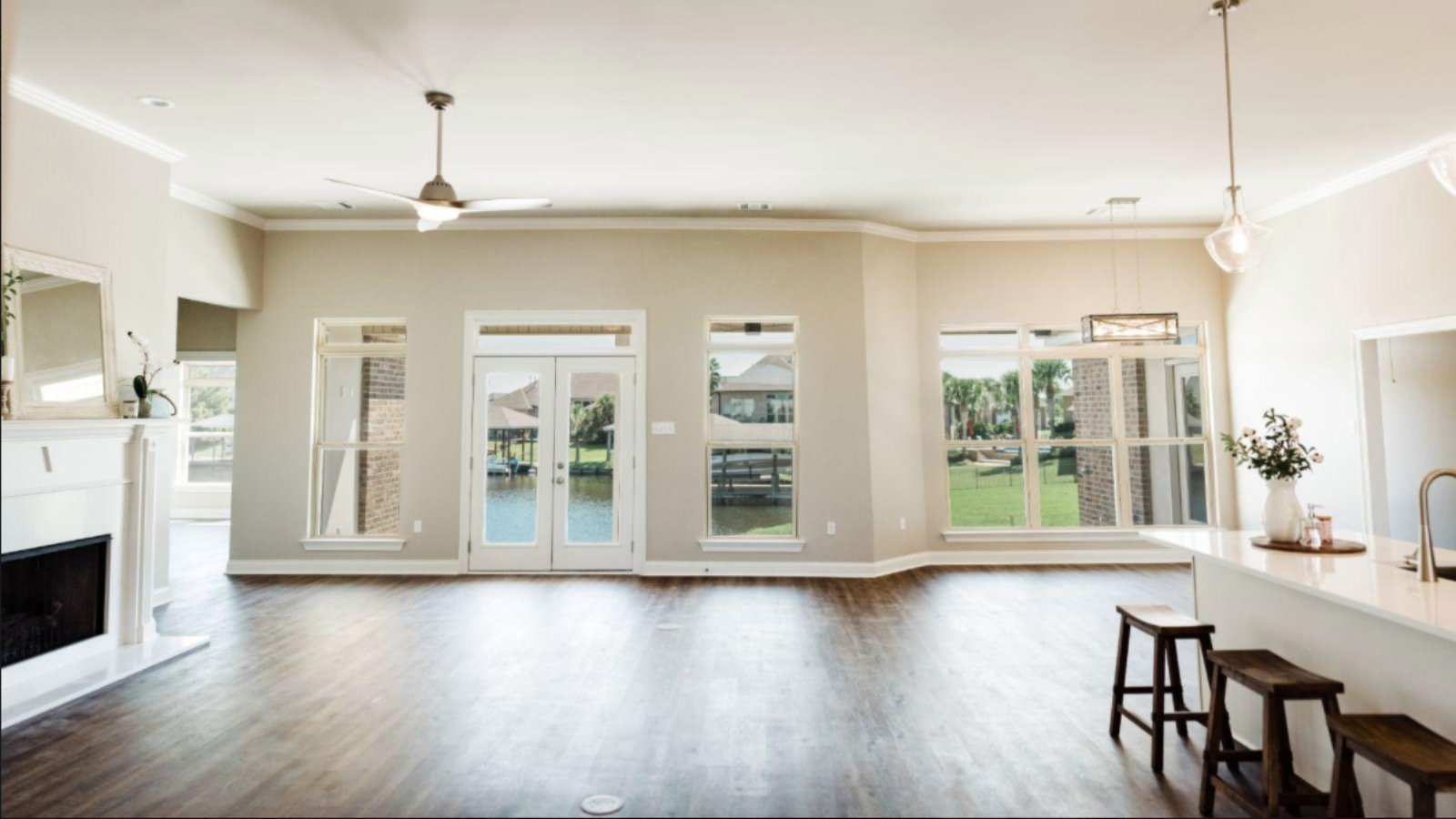News
The Impact of Smart Home Technology on Modern Living
Imagine waking up in the morning, and before you even get out of bed, your smart thermostat has adjusted the room temperature to your preference. Your coffee machine starts brewing your favorite blend, and the blinds gradually open to let in natural light. This is not a scene from a sci-fi movie—this is the reality of smart home technology today.

Smart home technology has revolutionized the way we live, bringing unparalleled convenience, efficiency, and security to our homes. From voice-controlled assistants like Alexa and Google Home to advanced security cameras and energy-efficient lighting systems, smart homes are reshaping modern living.
In this article, we will explore the impact of smart home technology, its benefits, challenges, and future trends. Whether you're considering upgrading your home or simply curious about this growing trend, this guide will provide valuable insights into the world of smart living.
Understanding Smart Home Technology
What is Smart Home Technology?
Smart home technology refers to a system of interconnected devices that automate and control various aspects of a home, such as lighting, heating, security, and entertainment. These devices can be managed remotely via smartphones, tablets, or voice commands, making life more convenient and efficient.
Key Components and Devices
Smart homes rely on several key components, including:
- Smart Speakers & Voice Assistants (Amazon Alexa, Google Assistant)
- Smart Lighting (Philips Hue, LIFX)
- Smart Thermostats (Nest, Ecobee)
- Security Systems (Ring doorbells, Arlo cameras)
- Automated Appliances (Smart refrigerators, robotic vacuums)
How Does It Work?
Smart home devices are powered by the Internet of Things (IoT), allowing them to communicate with each other. AI-driven automation enables predictive behavior, such as adjusting the thermostat based on usage patterns. With mobile apps and voice commands, users can monitor and control their homes from anywhere in the world.
Benefits of Smart Home Technology
Convenience and Automation
One of the biggest advantages of smart home technology is convenience. With automation, homeowners can schedule and control devices remotely. For example:
- Smart thermostats adjust temperatures based on your habits.
- Voice assistants control multiple devices hands-free.
- Automated vacuum cleaners clean your home while you're at work.
This level of automation not only saves time but also reduces the effort required for routine tasks.
Energy Efficiency and Sustainability
Smart home technology contributes to energy conservation, which is both cost-effective and environmentally friendly. Key energy-saving features include:
- Smart Thermostats: Adjust room temperatures automatically to optimize energy use.
- Smart Lighting: Turns off lights when no one is in the room.
- Energy Monitoring: Devices track energy consumption, helping users reduce waste.
Studies show that smart home technology can cut electricity bills by up to 30%, making it a smart investment.
Security and Safety Enhancements
Safety is another crucial benefit of smart home technology. Advanced security features provide peace of mind through:
- Smart Locks: Keyless entry and remote access control.
- Surveillance Cameras: Live-streaming and motion detection alerts.
- Smoke & Gas Leak Detectors: Send real-time alerts to prevent disasters.
These security enhancements make homes safer, reducing the risk of break-ins and accidents.
Challenges and Limitations of Smart Home Technology
High Initial Costs
While smart home technology offers numerous benefits, the initial investment an be expensive. High-end smart security systems and automation devices may cost thousands of dollars. However, considering long-term savings on energy bills and security benefits, the investment often pays off over time.
Privacy and Security Risks
One major concern is data privacy. Since smart home devices collect personal information, they are vulnerable to hacking and cyber threats. To enhance security:
- Use strong passwords and enable two-factor authentication.
- Regularly update software to fix security vulnerabilities.
- Invest in reliable brands with strong security protocols.
Compatibility Issues
Not all smart home devices work seamlessly together. Some brands operate on different platforms, making integration a challenge. To avoid compatibility issues:
- Choose devices that support common protocols like Zigbee or Z-Wave.
- Opt for brands that offer universal compatibility.
Despite these challenges, smart home technology continues to evolve, making integration easier over time.
Smart Home Technology and Its Impact on Daily Life
Smart home technology has transformed the way we manage our homes, making daily tasks easier and more efficient. From household management to entertainment and even health monitoring, smart devices have become essential for modern living.
Transforming Household Management
With smart home devices, managing household chores has never been easier. Some of the most impactful innovations include:
- Smart Kitchens: Smart refrigerators track food inventory, suggest recipes based on available ingredients, and notify users when groceries are running low. Smart ovens can be preheated remotely, ensuring meals are ready faster.
- Automated Cleaning Systems: Robot vacuum cleaners like Roomba can be scheduled to clean floors at designated times, reducing manual effort. Smart washing machines and dishwashers optimize water and energy usage, making household chores more efficient.
- Irrigation and Gardening: Smart irrigation systems adjust water usage based on weather conditions, preventing overwatering and conserving water.
With these innovations, homeowners can focus on more important tasks while their smart home takes care of the mundane chores.
Enhancing Entertainment and Connectivity
Entertainment has also evolved with smart home technology. The following features enhance home entertainment experiences:
- Smart TVs & Streaming Services: Voice-controlled smart TVs allow users to browse streaming platforms like Netflix, Hulu, and YouTube hands-free.
- Multi-Room Audio Systems: Smart speakers like Sonos provide seamless music streaming across multiple rooms.
- Gaming & Virtual Reality: Smart gaming consoles with AI integration enhance immersive gaming experiences.
Moreover, fast internet and IoT connectivity ensure seamless performance, reducing lag and buffering in online activities.
Improving Health and Well-being
Smart home technology is also revolutionizing health monitoring and personal well-being:
- Smart Fitness Devices: Wearable smartwatches track physical activity, heart rate, and sleep patterns.
- Sleep Monitoring Systems: Smart mattresses and sleep trackers analyze sleep quality, adjusting temperature and firmness for better rest.
- AI-driven Healthcare Assistants: Devices like smart pill dispensers remind users to take medications on time, assisting elderly or forgetful individuals.
By integrating these smart health solutions, individuals can lead healthier and more balanced lives.
The Role of AI and IoT in Smart Homes
Artificial Intelligence (AI) and the Internet of Things (IoT) are the driving forces behind smart home automation.
- AI-driven Automation: AI enables predictive behavior, learning user preferences to automate tasks. For example, AI can adjust room lighting based on daily routines.
- IoT Connectivity: IoT allows smart devices to communicate, creating a fully connected home ecosystem. A smart thermostat, for instance, can sync with motion sensors to adjust temperature based on occupancy.
As AI and IoT continue to evolve, smart homes will become even more intuitive, creating truly seamless living experiences.
Future Trends in Smart Home Technology
Smart home technology is continuously evolving, with exciting trends shaping the future:
- AI-powered Personal Assistants: Future AI assistants will offer even more personalized interactions, learning user preferences to anticipate needs.
- Integration with Renewable Energy: Smart homes will increasingly integrate with solar panels and battery storage systems, reducing reliance on the power grid.
- 5G and Faster Connectivity: The rollout of 5G technology will enhance IoT capabilities, making smart homes even more efficient.
- Holographic Displays & AR Integration: Augmented Reality (AR) will bring new ways to interact with smart devices, making home automation more intuitive.
These advancements promise a future where homes are not just smart but also sustainable and ultra-efficient.
How to Set Up a Smart Home
For those new to smart home technology, setting up a smart home can seem overwhelming. Here’s a step-by-step guide to get started:
Step 1: Choose a Smart Home Ecosystem
Decide whether you want to use Amazon Alexa, Google Assistant, or Apple HomeKit as your primary smart home platform. This choice will determine device compatibility.
Step 2: Start with Essential Devices
Begin with a few key smart devices:
- Smart Speaker (e.g., Amazon Echo, Google Nest Hub) for voice control
- Smart Lights (e.g., Philips Hue, LIFX) for automated lighting
- Smart Thermostat (e.g., Nest, Ecobee) for energy efficiency
- Smart Security Camera (e.g., Ring, Arlo) for home surveillance
Step 3: Expand Gradually
Once comfortable, add more devices like:
- Smart plugs to control non-smart devices
- Smart locks for keyless entry
- Smart home hubs for advanced automation
Step 4: Optimize Automation
Use routines and scheduling features to enhance automation. For example, set up a "Good Night" routine that turns off all lights, locks doors, and lowers the thermostat.
Step 5: Secure Your Smart Home
- Regularly update device firmware
- Use strong passwords and enable two-factor authentication
- Secure your Wi-Fi network with encryption
Following these steps ensures a smooth and secure smart home setup.
9. Conclusion
Smart home technology has significantly transformed modern living, offering convenience, energy efficiency, security, and entertainment. While challenges such as privacy risks and high initial costs exist, continuous advancements in AI and IoT are making smart homes more accessible and reliable.
With the future bringing even more innovations, smart homes will continue to evolve, making everyday life more automated, sustainable, and connected. Whether you're taking your first steps into smart living or looking to expand your current setup, embracing smart home technology is a step toward a more efficient and futuristic lifestyle.
10. FAQs
1. Is smart home technology affordable for everyone?
Smart home technology can be costly initially, but budget-friendly options like smart plugs and basic smart lighting make it accessible. Over time, energy savings can offset costs.
2. How does smart home technology improve security?
Smart home security systems include motion sensors, smart locks, and real-time surveillance, allowing homeowners to monitor their property remotely and receive instant alerts.
3. Can smart home devices work without the internet?
Some smart home devices have offline functionality, but most require Wi-Fi connectivity for full automation and remote access.
4. Are there any health concerns related to smart homes?
While smart home technology is generally safe, prolonged exposure to Wi-Fi and Bluetooth signals is a concern for some. However, no conclusive studies have proven harmful effects.
5. What is the best way to start making a home smart?
Begin with a smart speaker or hub, then gradually add devices like smart lights, thermostats, and security cameras based on your needs and budget.




